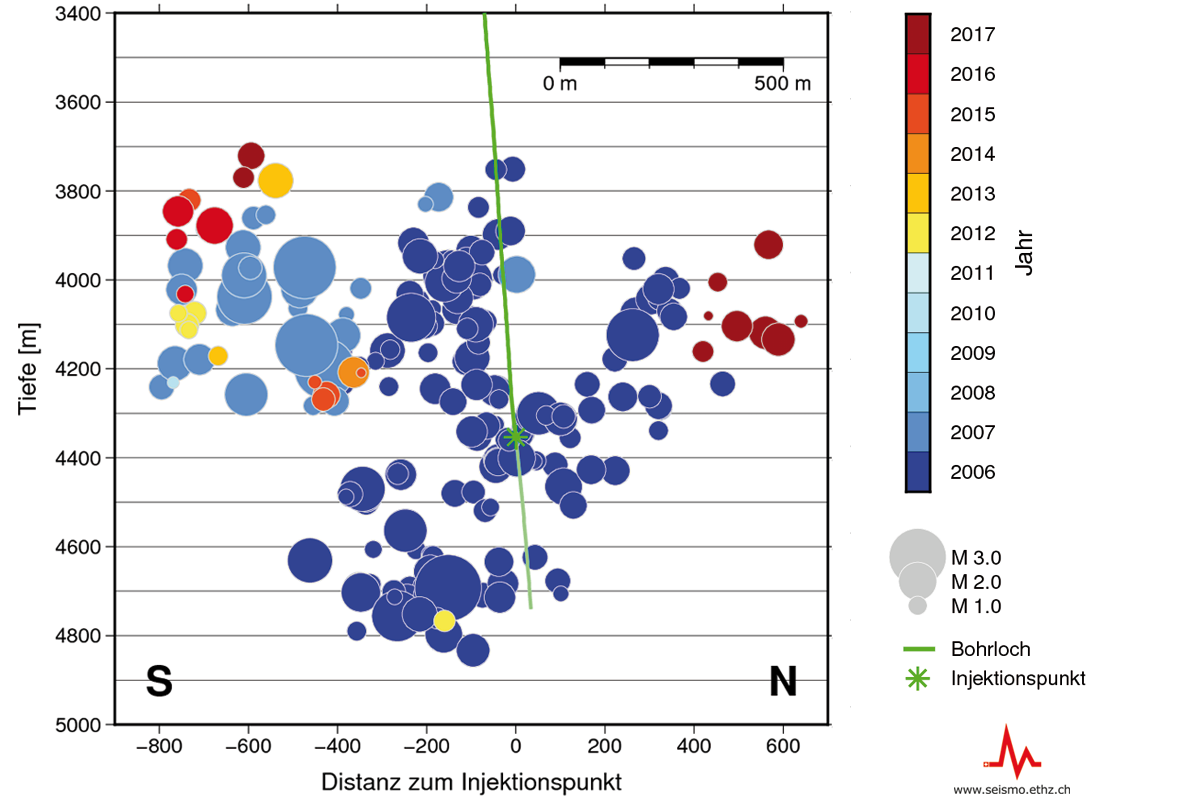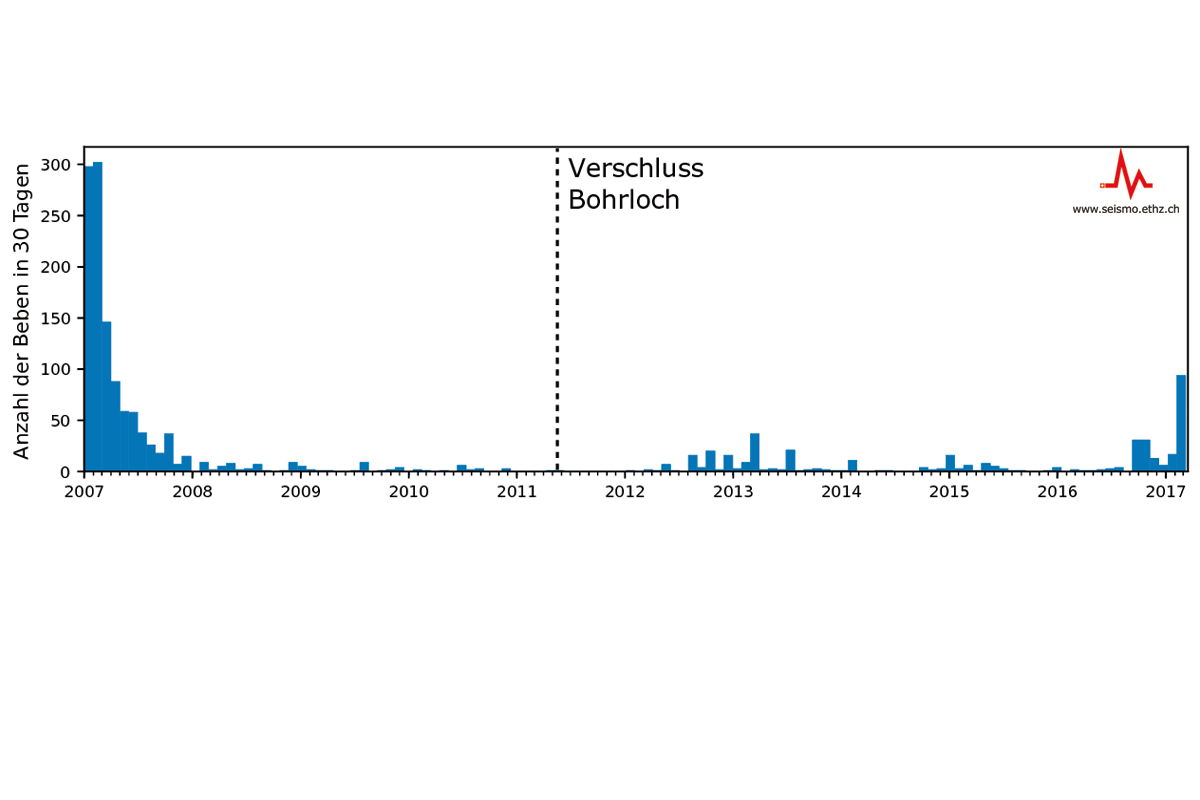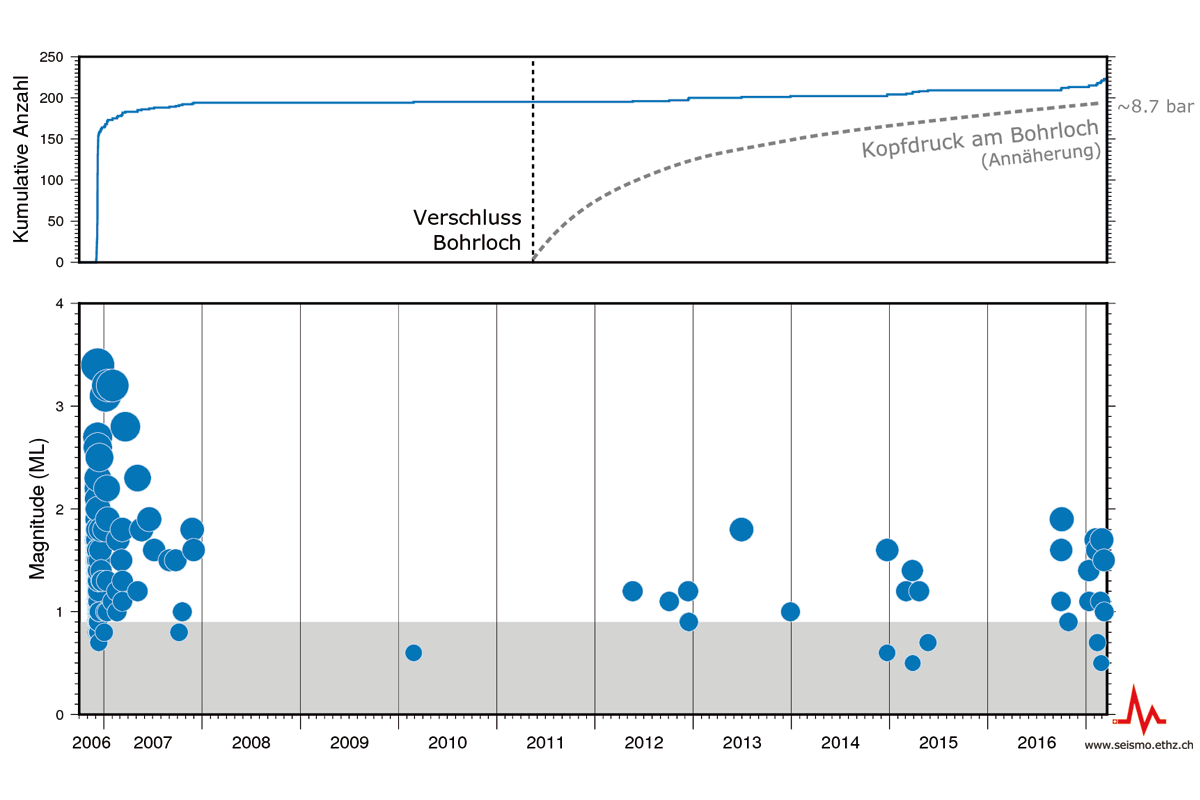Opening of a geothermal borehole in Basel
On 28 March 2017, in consultation with Basel Industrielle Werke (IWB) the Department of Health of the Canton of Basel decided to re-open the borehole created in Basel as part of the "Deep Heat Mining" geothermal power project in 2006. The decision was prompted by an increase in microearthquake activity in the immediate vicinity of the borehole over the past few months. An extensive scientific study by the Swiss Seismological Service (SED) at the ETH Zurich revealed that the increased earthquake activity will most probably subside again in the long term if the borehole is opened.
Read more...The geothermal project in Basel launched in 2006 sought to create an artificial fracture system in rock 4,000-5,000 m underground to use as a geothermal reservoir for power generation. To this end, cold water was injected into the substrate under high pressure. In the course of this process, a large number of microearthquakes occurred, some of them noticeable, and one earthquake with a magnitude of 3.4 magnitude (ML), which caused minor damage to buildings. As a result, work on the project was interrupted and then stopped altogether in 2009 after a comprehensive risk analysis. The borehole was opened in December 2006 after increased seismicity, and closed again in April 2011.
Earthquake activity in the vicinity of the borehole has been monitored by a seismic network since the start of the project. The indications from the amassed data are that seismic activity in the stimulated area has more or less continually decreased since the project ended in 2006. Roughly a year after the closure of the borehole in April 2011, seismic activity in the immediate vicinity of the borehole markedly increased again. This increase has been particularly noticeable since the second half of 2016 and typically consisted of swarms of microearthquakes, with phases of increased activity over a number of weeks being followed by quieter periods. So far, none of these earthquakes were felt by the public.
Apart from the seismic activity, in recent months the spatial distribution of the quakes has also shifted. The latest earthquakes occurred at the southern and northern edges of the previously affected area, suggesting that the artificially induced fractures are spreading. In addition, measurements show that the hydraulic pressure in the reservoir (pore pressure) has steadily increased since the borehole was closed. A detailed analysis of the seismic data and modelling of the relationship between earthquakes and increasing pore pressure have shown that even modest pressure increases in the reservoir can significantly increase seismicity.
Analyses performed by the Swiss Seismological Service (SED) show that a noticeable minor earthquake with a magnitude of 2 may well occur within the next 12 months unless steps are taken to lower the pressure. The probability of this happening is between 55% and 85%. The current probability of an earthquake as strong as the one that occurred in 2006, which had a magnitude of 3.4, is around 5%. Based on its modelling and the decline in seismicity observed between 2007 and 2011, the SED expects that opening the borehole for the next one or two years should lower the average seismicity rate by between 50% and 90% percent.
Over the past decade, the SED has advised and supported project operators and in particular cantonal authorities (e.g. Basel-Stadt, Jura, Vaud, Thurgau and the city of St. Gallen) on deep geothermics. This work focussed on seismological aspects of the environmental impact assessment (EIA), seismic monitoring and the review of operational and seismic safety concepts.
Learn more
Background report on induced earthquakes within area covered by the geothermal project in Basel (in German)
Press release by the Canton of Basel Stadt on the opening of the borehole (in German)
Earthquakes and geothermal energy – a brief explanation of key correlations


